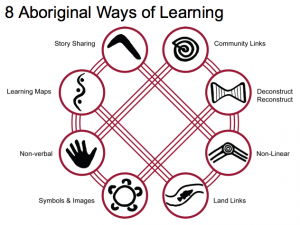Stolen Children: Truth & Reconciliation
Sponsored by CBC, Stolen Children: Truth & Reconciliation is rich collection of resources that help provide a historical account of residential schools and their lasting impact on Aboriginal people. It also documented the efforts of the The Truth & Reconciliation Commission (TRC), which was established by the Canadian government as an independent body to oversee the safe disclosure of individual experiences by former residential school students in a culturally respectful manner as part of the Residential Schools Settlement Agreement. Their mandate also includes helping reconcile the relationship between Aboriginal and Non-Aboriginal Canadians by raising awareness around the impact of the residential school sytem and its lasting effects that continue to affect people and communities today, although it’s a part of history that many Canadian’s continue to be fully aware of.
The site includes current news coverage as well as CBC Digital Archive videos to help illustrate a timeline of Aboriginal education policies in Canada. The sharp contrast in early propaganda produced to encourage residential school attendance to the 2008 apology by the Canadian government provide an eye-opening view to begin processing a more comprehensive understanding of the need for social and restorative justice.

